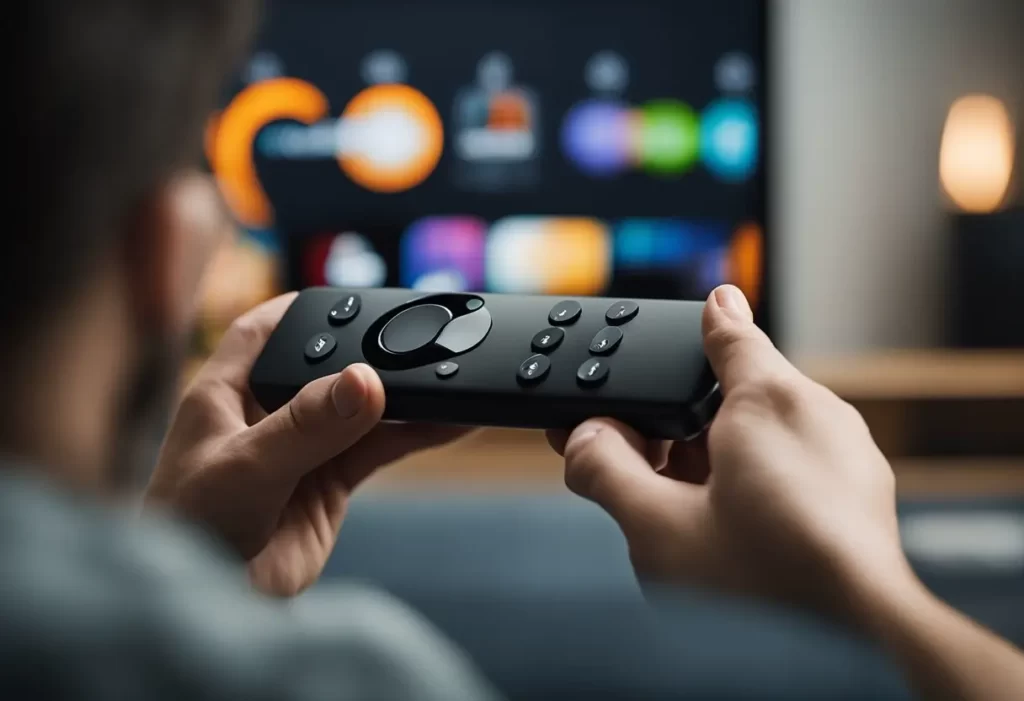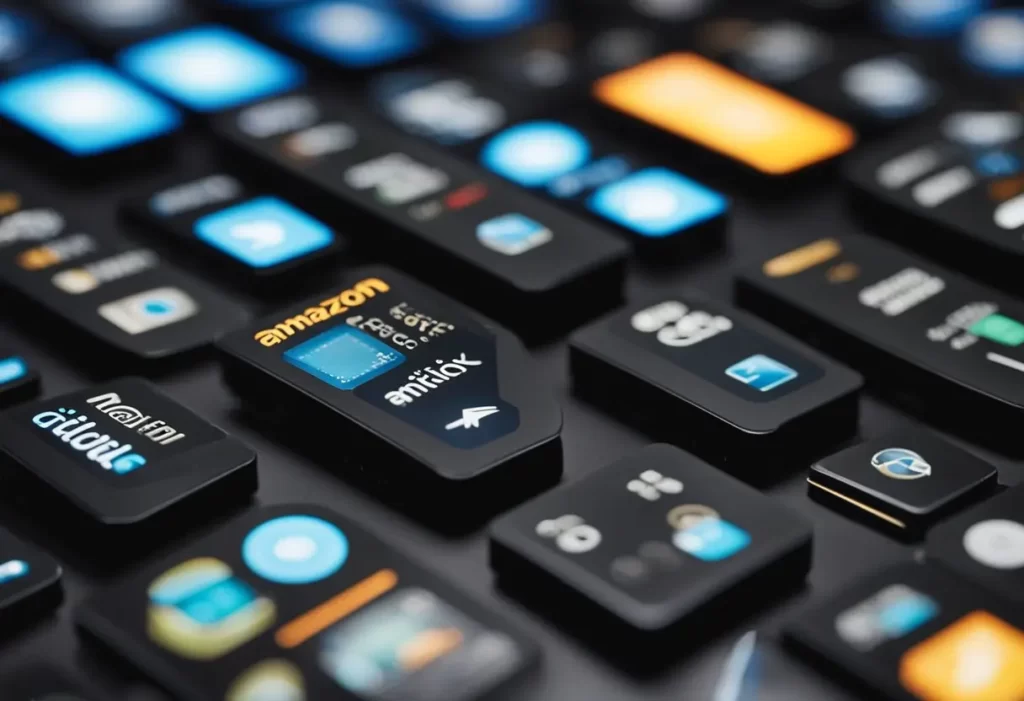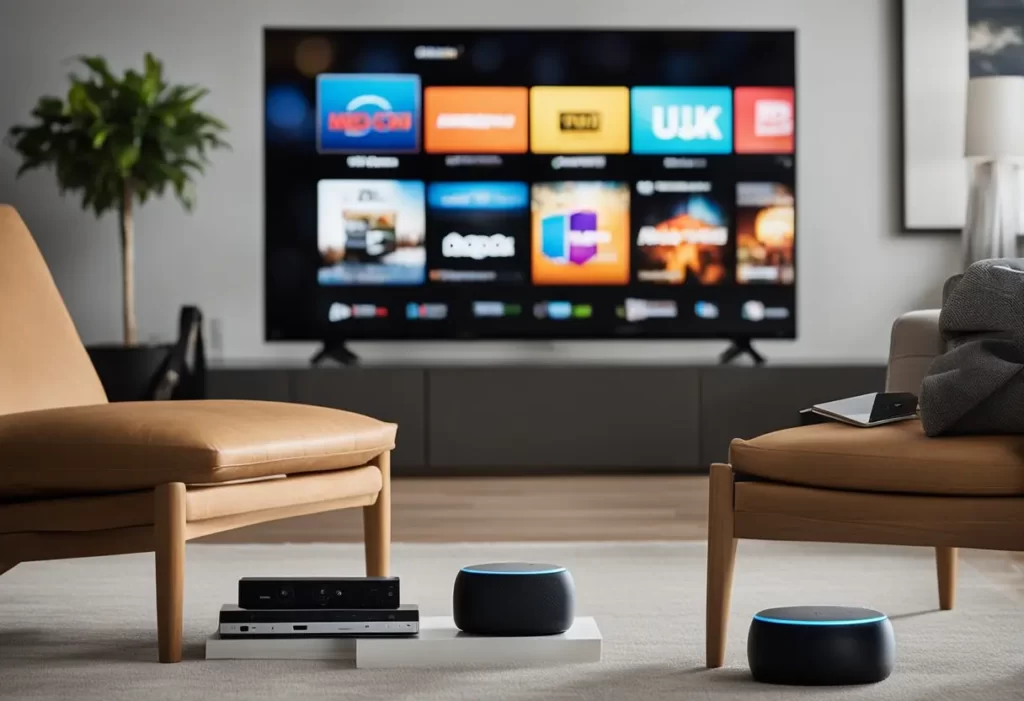Device Limits for Amazon Firestick: Amazon Firestick is a popular streaming device that allows users to access various streaming services like Netflix, Hulu, and Amazon Prime Video. One of the most common questions that users have is, “how many Firesticks can you have on one account?” This is an important question, especially for households with multiple TVs and family members who want to stream different content simultaneously.
According to the search results, there is no limit to how many Firesticks you can have on one account. This means that if you have multiple TVs in your home, you can purchase a Firestick device for each TV and connect them all to the same account. However, there may be a limit to how many devices can stream a certain service at one time. For example, depending on what Netflix plan you have, you can either stream on up to two devices or up to four devices.
Understanding Amazon Firestick Accounts

Amazon Firestick is a popular streaming device that allows users to access a wide range of content on their TV. One of the most common questions that users have is how many Firesticks can be connected to one Amazon account.
Users can connect as many Firesticks to their Amazon account as they like, but there are some limitations to how many can be used at the same time. Specifically, users can only have three Firestick devices working simultaneously on one account. This means that if a user lives in a house with more than three Firestick devices, they will be capped once the limit is reached.
In addition, there are some usage allowances for Prime Video that users should be aware of. According to Amazon Forum, users can stream up to three titles at the same time using the same Amazon account. Users can also stream the same title to no more than two devices at a time.
It’s important to note that some third-party applications may also put a limit on how many streams are allowed. For example, according to BlogDigger, Amazon allows a maximum of three devices to be streaming content at the same time using the same account. This means that if a user has multiple Firesticks, they can only use up to three of them to stream content simultaneously.
To sum it up, users can connect as many Firesticks to their Amazon account as they like, but they can only use up to three of them to stream content simultaneously. Additionally, there are some usage allowances for Prime Video that users should be aware of, and some third-party applications may also put a limit on how many streams are allowed.
Device Limits for Amazon Firestick
Amazon Firestick is a popular streaming device that allows users to access various streaming services such as Netflix, Hulu, Prime Video, and more. While the device is designed to be easy to use, there are some limitations on how many Firesticks one can have on a single account.
According to Amazon, users can register as many Firestick devices to their Amazon account as they would like. However, there are some usage allowances for Prime Video. Users can stream up to three titles at the same time using the same Amazon account. They can also stream the same title to no more than two devices at a time.
In addition to the usage allowances set by Amazon, some third-party applications may also put a limit on how many streams can be used simultaneously. For example, Disney+ allows users to stream up to four devices at a time.
It is important to note that while there is no limit to how many Firesticks can be registered to a single account, there is a limit to how many devices can be used simultaneously. Users who want to stream on more than three devices at the same time will need to create multiple Amazon accounts or use a different streaming service that allows for more simultaneous streams.
Overall, Amazon Firestick is a great device for streaming content, but users should be aware of the device limits and usage allowances set by Amazon and third-party applications. By keeping these limitations in mind, users can enjoy their streaming experience without any interruptions.
Managing Multiple Firesticks on One Account

Amazon Firesticks are a popular streaming device that allows users to access various entertainment options. However, if you have multiple Firesticks in your home, you may wonder how many of them you can connect to one Amazon account.
While you can connect as many Firesticks to your Amazon account as you like, there are some limitations to how many you can use at the same time. To start, you can only have three Firestick devices working simultaneously on one account. This means that if you live in a house with more than three Firestick devices, you will be capped once the fourth device is turned on.
Additionally, some third-party applications may also put a limit on how many streams are allowed per account. Therefore, it is essential to check the app’s terms and conditions before attempting to use it on multiple Firesticks.
To manage multiple Firesticks on one account, users can create profiles for each device. This way, each device can have its own preferences, watchlist, and viewing history. To create a profile, users can navigate to the “Settings” section of the Firestick and select “My Account.” From there, they can select “Amazon Account” and “Add New.”
In conclusion, while you can connect multiple Firesticks to one Amazon account, there are limitations to how many can be used simultaneously. However, by creating profiles for each device, users can manage multiple Firesticks on one account and enjoy their favorite entertainment options on each device.
Benefits of Multiple Firesticks on a Single Account
Having multiple Amazon Firesticks linked to a single account can offer a range of benefits to users. Here are some of the key advantages:
1. Cost-Effective
One of the biggest advantages of using multiple Firesticks on a single account is that it can be more cost-effective than buying separate accounts for each device. This can be particularly useful for families or households with multiple TVs, as it allows everyone to access the same content without having to pay for multiple subscriptions.
2. Convenient
Linking multiple Firesticks to a single account can also be incredibly convenient. Users can easily switch between devices without having to log in and out of different accounts, which can save time and hassle. Additionally, users can easily share content between devices, such as movies or TV shows, without having to transfer files or use external storage devices.
3. Flexibility
Another advantage of using multiple Firesticks on a single account is that it offers greater flexibility in terms of where and how users can watch content. Users can easily move their Firesticks between different TVs or locations, such as a vacation home or friend’s house, without having to worry about setting up a new account or paying additional fees.
4. Simultaneous Streaming
While there is a limit to the number of Firesticks that can be linked to a single account, users can still stream content on up to three devices simultaneously, which can be useful for households with multiple people who want to watch different shows or movies at the same time. However, it’s important to note that some third-party applications may have additional limitations or restrictions on simultaneous streaming.
In summary, linking multiple Firesticks to a single account can be a cost-effective, convenient, flexible, and practical solution for households with multiple TVs or users.
Potential Challenges with Multiple Firesticks

While it is possible to have multiple Amazon Firesticks registered to a single account, there are a few potential challenges that users may face when using multiple devices simultaneously.
Limitations on Streaming Content
One of the main challenges of having multiple Firesticks is the limitation on streaming content. There is a limit to the number of Firestick devices that can be connected simultaneously, with three being the maximum. Additionally, third-party applications may put a limit on how many streams can happen at the same time. It is important to keep this in mind when using multiple Firesticks at the same time.
Internet Bandwidth
Another potential challenge is internet bandwidth. Streaming content on multiple Firesticks at the same time can put a strain on internet bandwidth, which may result in slower download speeds and buffering. It is important to ensure that the internet connection is strong enough to support multiple Firesticks before using them simultaneously.
Remote Control Confusion
Using multiple Firesticks may also result in remote control confusion. If multiple Firesticks are being used in the same room, it may be difficult to ensure that the correct remote control is being used for each device. This can be especially challenging if the devices are not labeled or if the remote controls are similar in appearance.
Overall, while it is possible to have multiple Firesticks registered to a single account, there are a few potential challenges that users may face when using multiple devices simultaneously. It is important to keep these challenges in mind and to ensure that the internet connection is strong enough to support multiple Firesticks before using them simultaneously.
Setting Up a New Firestick
Setting up a new Firestick is a simple process that can be completed in a few minutes. Before starting, ensure that you have a stable internet connection and an Amazon account. If you do not have an Amazon account, you can create one for free on the Amazon website.
To begin the setup process, plug the Firestick into an available HDMI port on your TV and connect it to a power source. Once the Firestick is connected, turn on your TV and select the appropriate HDMI input using your TV remote.
After a few seconds, the Firestick will display the setup screen. Follow the on-screen instructions to connect the Firestick to your Wi-Fi network and sign in to your Amazon account. If you have multiple Firesticks, you can use the same Amazon account for all of them.
Once the Firestick is connected to your network and Amazon account, you can start exploring the various apps and services available on the device. You can use the Firestick to stream movies, TV shows, music, and more. You can also download additional apps from the Amazon Appstore to customize your Firestick experience.
In summary, setting up a new Firestick is a straightforward process that can be completed quickly. By following the on-screen instructions and connecting the device to your Amazon account, you can start enjoying all the features and benefits of the Firestick.
Navigating Amazon’s Content Synchronization
When using multiple Firesticks on a single Amazon account, it’s important to understand the limitations of content synchronization. Amazon allows up to three Firestick devices to be used simultaneously on a single account. This means that if a household has more than three Firesticks, they will be capped once the limit is reached.
However, it’s important to note that there are some usage allowances for Prime Video. Streaming content is limited to three titles at the same time using the same Amazon account. The same title can be streamed to no more than two devices at a time. Purchased content, on the other hand, can be streamed to an unlimited number of devices.
To ensure that content is synchronized across all devices, users can enable content synchronization on their Amazon account. This feature allows users to sync their watchlist, video library, and viewing progress across all devices.
To enable content synchronization, users can follow these steps:
- Go to the Amazon website and log in to your account.
- Click on “Your Account” and select “Content and Devices” from the dropdown menu.
- Click on the “Preferences” tab and select “Content Syncing”.
- Toggle the switch to enable content syncing.
Once enabled, content synchronization will automatically update your watchlist, video library, and viewing progress across all devices. This ensures that users can seamlessly switch between devices without losing their progress or having to manually update their watchlist.
Overall, navigating Amazon’s content synchronization can be a simple process with the right knowledge and tools. By understanding the limitations of simultaneous device usage and enabling content synchronization, users can make the most out of their Amazon Firesticks and enjoy their favorite content on all devices.
Troubleshooting Common Issues with Multiple Devices
When it comes to using multiple Amazon Firesticks on one account, there are some common issues that users may face. Here are some troubleshooting tips to help resolve these issues:
1. Limitations on Simultaneous Usage
While there is no limit to the number of Firesticks you can connect to your Amazon account, there are limitations on how many devices can be used simultaneously. According to The Gadget Buyer, you can only have three Firestick devices working simultaneously on one account. If you try to use more than three devices at the same time, you may experience issues such as buffering or slow performance.
2. Connectivity Issues
If you are having trouble connecting multiple Firesticks to your home network, there are a few things you can try. First, make sure that your Wi-Fi network is strong enough to support multiple devices. You may need to upgrade your router or move it closer to your Firesticks to improve the signal strength. Additionally, you can try resetting your Firestick devices and your router to see if that resolves the issue.
3. App Compatibility Issues
Some users may experience issues with app compatibility when using multiple Firesticks on one account. For example, if you have two Firesticks in different rooms and you try to watch the same movie on both devices at the same time, you may encounter issues with playback. To avoid these issues, try using different apps on each device or watch different content on each device.
Overall, while there are some limitations to using multiple Firesticks on one account, most users should be able to use multiple devices without any major issues. By following these troubleshooting tips, you can help ensure that your Firesticks are working properly and that you can enjoy your favorite content without any interruptions.
You might also like
